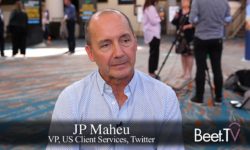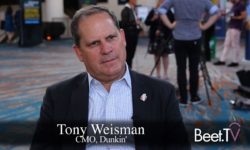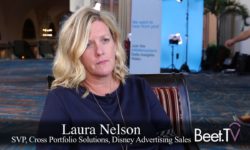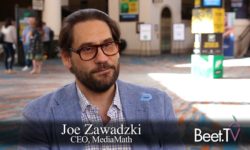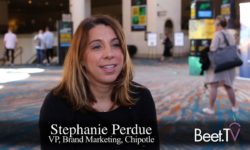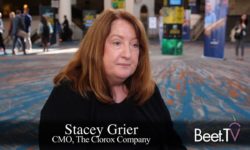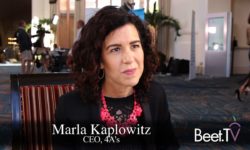ORLANDO – MillerCoors knows you tune out, and likely check your phone, during commercial breaks. As a company that relies on linear TV, and particularly live events like sports, in its advertising strategy, it’s looking to figure out how to still get in front of customers who aren’t paying attention to TV ad spots.
Brad Feinberg, MillerCoors’ vp of media and consumer engagement, spoke to Beet.TV at the ANA Masters of Marketing Conference about the measurement “journey” and how to best connect the dots when it comes to attribution and data gathering in real time. Real time, here, means a monthly cadence – Feinberg says candidly that the team is working to speed up that time frame, but right now it’s able to collect and assess reactions to marketing campaigns by brand on a monthly basis. Still, it’s an improvement over the past five years, when a set-it-and-forget-it strategy ruled marketing approaches as data only came in every few months with last-touch attribution and mix modeling approaches, which Feinberg calls a “rearview mirror.”
“As the world and news cycle has changed, that time frame doesn’t work as it used to for CPG brands,” says Feinberg. “Marketers need to react and operate in a real time world that’s operating at the speed of culture.”
In looking for alternatives to last-touch attribution and mix modeling, MillerCoors, like many other brands particularly digitally native DTC brands, found a solution in multi-touch attribution. But unlike digitally native brands, MillerCoors’ approach to multi-touch attribution spans TV and digital channels, not just digital, where 80 to 90 percent of its marketing dollars sit.
“Our ultimate goal is the ability to optimize your marketing in real time, making those micro-adjustments to our marketing plan on a brand-by-brand basis, to achieve the objectives of the campaign,” says Feinberg. In TV advertising, optimization means collecting data by program, program type, network and time of day to see what is performing best at any given moment. Then, the company can go back to its media plan and make proper adjustments.
Perhaps the last frontier in TV optimization is figuring out how to keep customer attention spans during those commercial breaks. One strategy is to use device ID tracking to figure out who on mobile devices is also watching TV, and serve them ads during commercials.
“I think the world is moving toward it – how you measure attention knowing there’s a lot of fragmentation out there. What can we do to get a better handle on how you measure if people are watching tv? Are they paying attention to a commercial? How do you get that data and measure it?” says Feinberg.
This video is part of Beet.TV’s coverage of the ANA Masters of Marketing Conference in Orlando, 2019. The series is sponsored by iSpot.tv. For more videos from the series, please visit this page.







